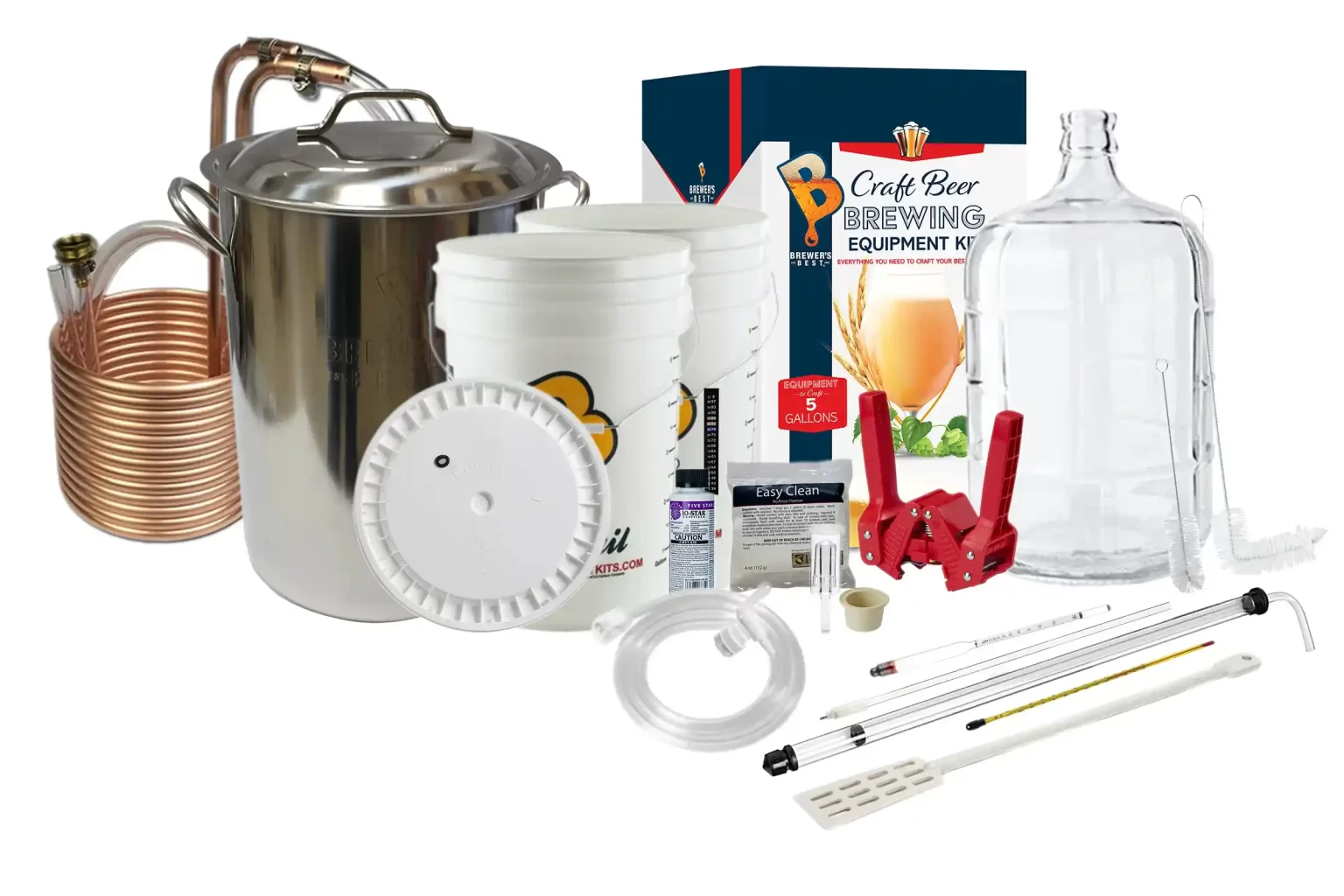If you are a beer lover, you must have considered making your own beer at home. Homebrewing is not only a fun and rewarding hobby but also allows you to create your own unique flavors and experiment with different ingredients. However, before you start, you need to ensure that you have the necessary equipment. This article will provide you with a comprehensive checklist of essential homebrewing equipment to help you get started.
1. Introduction
Before we dive into the equipment checklist, let’s briefly discuss the homebrewing process. Brewing beer involves four main steps: boiling, fermenting, conditioning, and bottling. Each step requires different equipment to ensure that the process goes smoothly and the beer turns out delicious.
2. Brew Kettle
A brew kettle is an essential piece of equipment for homebrewers. It is where you will boil the wort, the liquid extracted from malted grains, hops, and water. You can use a standard kitchen pot or invest in a specialized brew kettle. A brew kettle should be large enough to hold the volume of liquid needed for your batch size and have a tight-fitting lid.
3. Fermenting Equipment
After boiling the wort, you need to transfer it to a fermenting vessel, where yeast will convert the sugars into alcohol. A fermenting vessel can be a glass carboy, plastic bucket, or stainless steel conical fermenter. It should have a wide mouth for easy cleaning, be able to hold the volume of liquid needed for your batch size, and have a tight-fitting lid or stopper.
4. Airlock and Stopper
An airlock and stopper are essential for any fermenting vessel. They allow carbon dioxide, a byproduct of fermentation, to escape while preventing air, which can lead to contamination, from entering the vessel. There are different types of airlocks and stoppers, but a three-piece airlock and a universal stopper are commonly used.
5. Hydrometer
A hydrometer is a simple tool that measures the density of a liquid, which indicates the amount of sugar present in the wort. It is used before and after fermentation to determine the alcohol content of the beer and ensure that the fermentation process is complete. A hydrometer should be sanitized before use and handled carefully, as it is a delicate instrument.
6. Thermometer
A thermometer is necessary to monitor the temperature of the wort during the brewing process. It ensures that the temperature is within the range specified by the recipe and helps prevent off-flavors and other issues. A digital thermometer with a probe is recommended for accuracy and ease of use.
7. Brewing Spoon or Paddle
A brewing spoon or paddle is used to stir the wort during the boiling process, ensuring that the ingredients are evenly distributed and preventing them from sticking to the bottom of the kettle. A long-handled spoon or paddle made of stainless steel is recommended.
8. Auto-Siphon
An auto-siphon is a handy tool that makes transferring the beer from the fermenting vessel to the bottling bucket much easier. It uses a pump to start the siphon, eliminating the need for manual siphoning and reducing the risk
9. Bottling Bucket
A bottling bucket is used to transfer the beer from the fermenting vessel to the bottles. It should have a spigot to easily fill the bottles, a wide opening for easy cleaning, and a tight-fitting lid. A bottling bucket can also be used for priming the beer with sugar before bottling.
10. Bottles and Caps
Bottles and caps are essential for storing the finished beer. You can reuse bottles from commercial beer, but make sure to clean and sanitize them thoroughly. Bottles should be brown or green glass to protect the beer from light and have a capacity of 12 or 22 ounces. Caps should be new and fit the bottles snugly.
11. Bottle Capper
A bottle capper is used to seal the caps onto the bottles. There are two types of bottle cappers: handheld and benchtop. A handheld capper is more affordable and suitable for small batches, while a benchtop capper is faster and more efficient for larger batches.
12. Cleaning and Sanitizing Supplies
Cleaning and sanitizing are crucial steps in homebrewing to prevent contamination and ensure the beer’s quality. You will need a cleaner to remove dirt and residue from the equipment and a sanitizer to kill any remaining bacteria or yeast. There are many commercial cleaning and sanitizing products available, but you can also use household items like bleach or vinegar.
13. Optional Equipment
There are many optional pieces of equipment that can enhance your homebrewing experience, such as a wort chiller to cool the wort quickly, a refractometer to measure the sugar content of the wort more accurately, or a kegging system to serve the beer on tap. However, these items are not necessary for basic homebrewing and can be added later as you become more experienced.
14. Conclusion
Homebrewing is a fun and rewarding hobby that allows you to create your own unique beer flavors. However, before you start, you need to ensure that you have the necessary equipment. This checklist of essential homebrewing equipment covers everything you need to get started and create your first batch of delicious beer.
15. FAQs
Can I use a regular pot for boiling the wort?
- Yes, you can use a regular pot as long as it is large enough to hold the volume of liquid needed for your batch size.
How often do I need to clean and sanitize my equipment?
- You should clean and sanitize your equipment before and after every use to prevent contamination and ensure the beer’s quality.
Can I reuse bottles from commercial beer?
- Yes, you can reuse bottles from commercial beer, but make sure to clean and sanitize them thoroughly.
Do I need a bottle capper to bottle my beer?
- Yes, you need a bottle capper to seal the caps onto the bottles.
What is the best sanitizer to use for homebrewing?
- There are many commercial sanitizers available, but Star San and One Step are popular choices among homebrewers.









